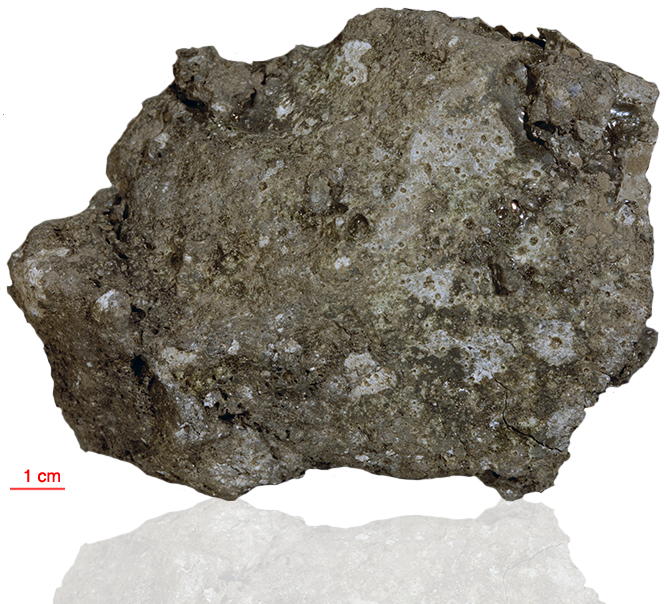
Fact sheet
61195 is a coherent, medium grey breccia with a glassy matrix and abundant clasts. It has also been described as a “shocked regolith breccia”. The matrix contains abundant glass including spheres; some of which are recrystallized. Mineral clasts (plagioclase, pyroxene and olivine) exhibit shock features. Rounded lithic fragments include granoblastic anorthosite, anorthositic norite, cataclastic anorthosite, basaltic and poikilitic impact melt and recrystallized vitric material. Accessory phases include spinel, metallic iron, ilmenite, troilite, schreibersite and ‘rust’. Our thin section is notable for pale green veins of vesicular impact melt which display remarkable flow features (rotation 1).
The sample weighed 588 grams before analysis and has not been dated.
Further details of this and other Apollo samples are here: http://curator.jsc.nasa.gov/lunar/
Orange patches in the thin section are artifacts - where the mounting medium has deteriorated with time.
The Apollo 16 landing site was in the hilly region around Descartes crater in the lunar highlands. The landing spot was chosen to allow the astronauts to gather geologically older lunar material (Descartes Formation and the Cayley Formation) than the samples obtained in the first four landings, which were in or near lunar maria.
The mission lasted 11.1 days, with a stay on the lunar surface of 71 hours. The crew were on the lunar surface for 20.2 hours during which they traversed approximately 27 kilometers and collected approximately 96 kilograms of samples.
Apollo 16 was launched on 16 April 1972.






